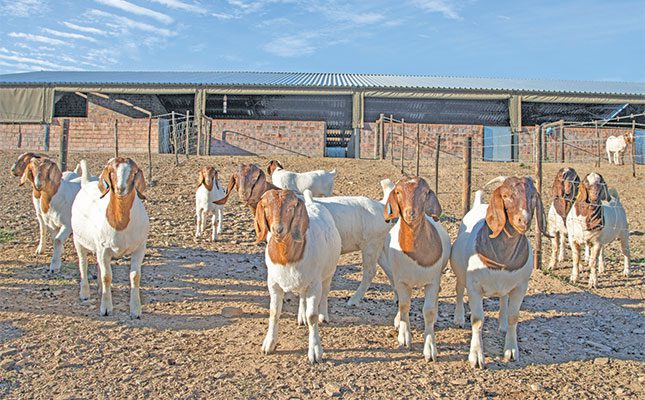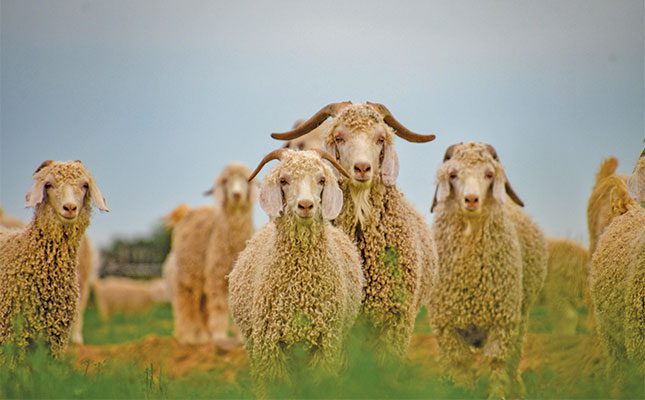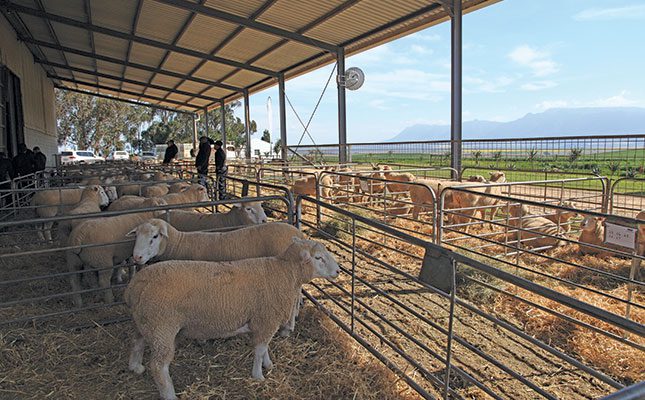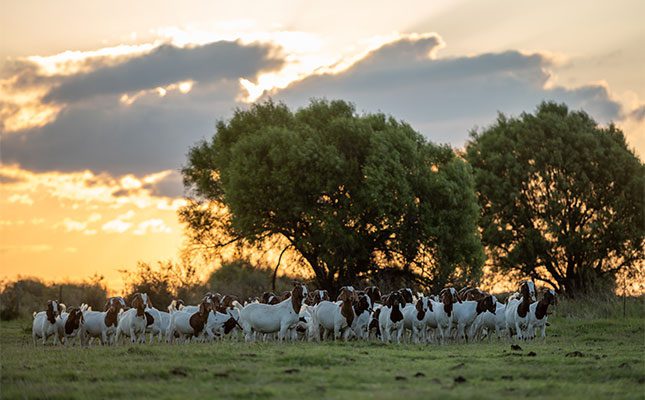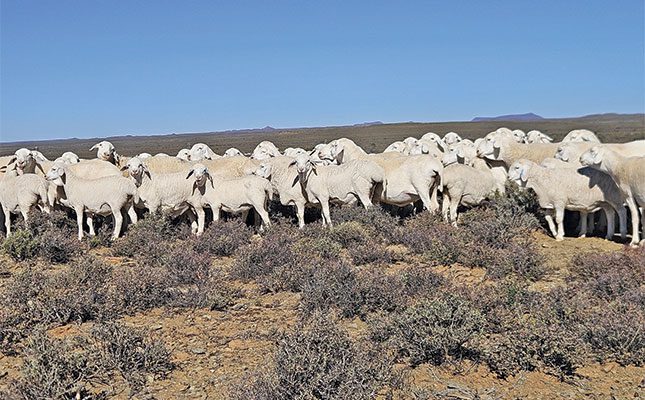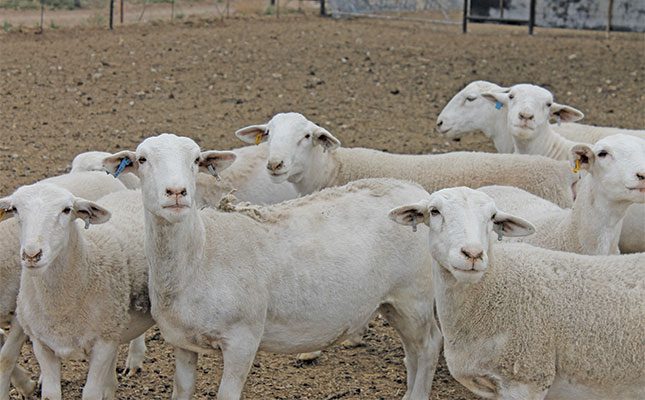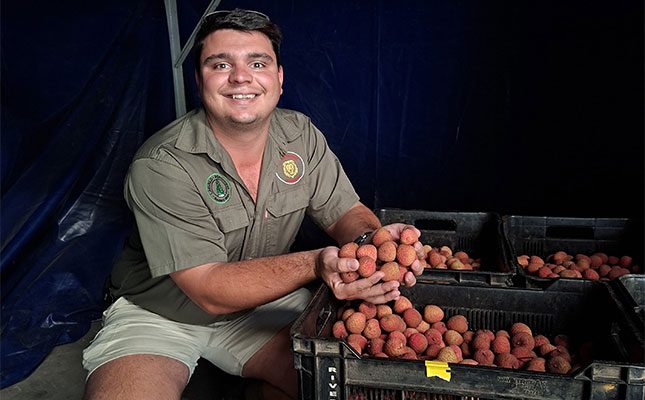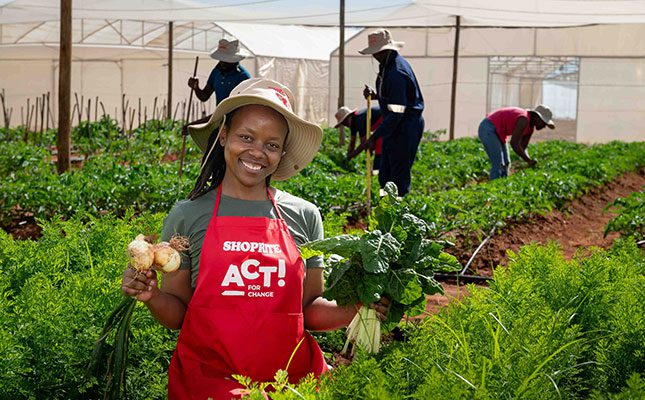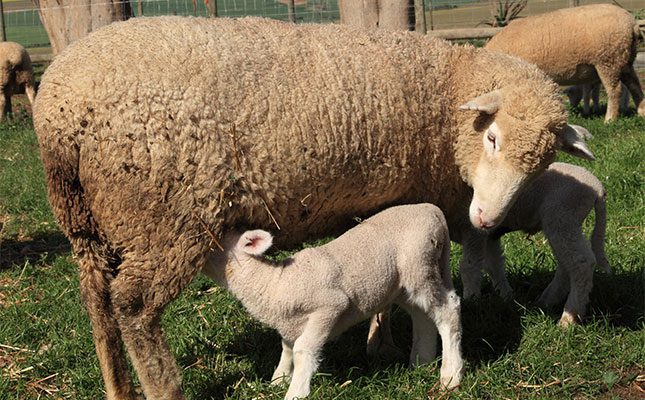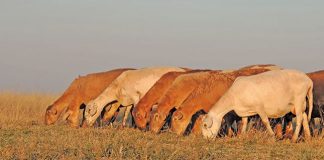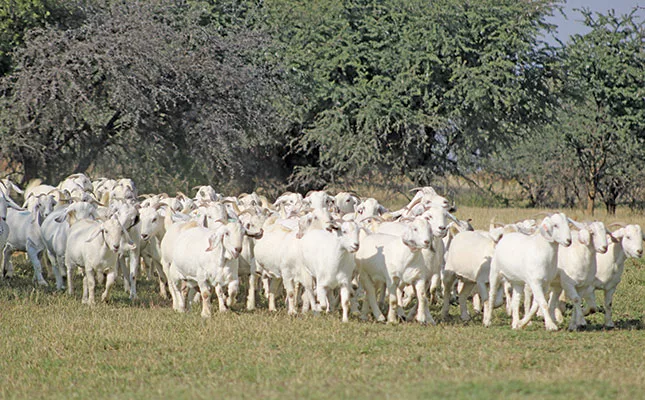
Photo: Supplied
In November 2021, Andrew Roberts, co-owner of the Maize Valley Savanna Stud, alongside Ju-mari Pretorius, placed a bid in an online auction on some Boer goat rams, but the connectivity was extremely poor.
READ Savanna goat ram sold for record price of R400 000 at Royal Genetics Sale
In the process of getting his bid placed, without realising it, he accidentally placed a bid on two Savanna ewes as well. These two ewes formed, in a manner of speaking, the rock on which the Maize Valley Savanna Stud was built.
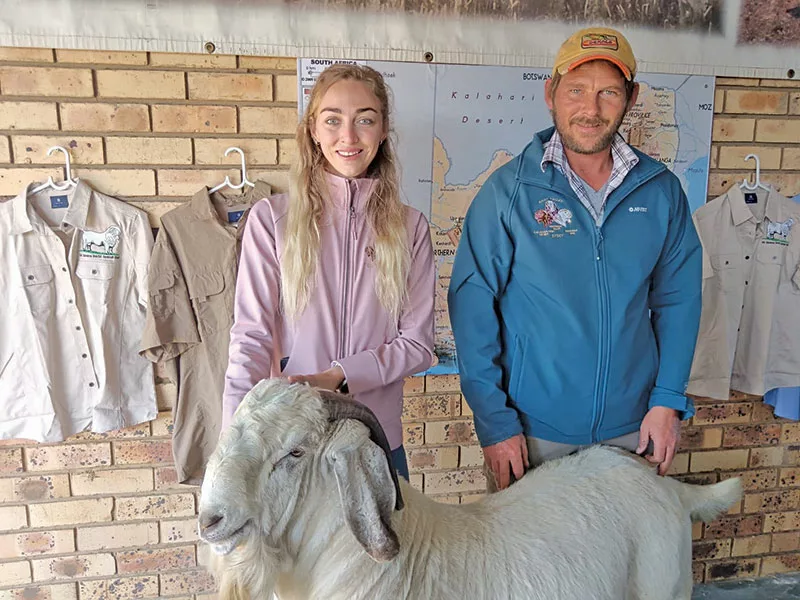
“It was only when the animals arrived on the farm that I realised I had accidentally bought two Savanna ewes as well. I wanted to sell them again right away. After a week they started to grow on me, so then and there I decided to start farming with them,” says Roberts.
The Maize Valley farming concern also includes a Boer goat and Kalahari Red stud, summer crop production and a Brangus stud. The Savannas are kept in Hoopstad in the Free State and Vryburg in North West.
Hardy and resilient
According to the Savanna Goat Breeders’ Club of South Africa, the uniformly white South African Savannas are meat goats that were developed from the outset to not only survive, but to thrive under extreme conditions. They are hardy, productive and resilient.
A group of farmers in the 1950s started to select white animals with specific traits out of the indigenous veld goats of Southern Africa. Traits like fertility, hardiness, and very good mothering ability were the traits they concentrated on and eventually the Savanna goat as is it is known today, was developed.
The large-framed Savanna is known for easy management, high parasite tolerance and exceptional hardiness. Savannas are lively and alert with an even temperament. The goats usually have strong jaws and strong, long-lasting and well-developed teeth, resulting in a lengthy and highly productive breeding life.
The South African Savanna has a fairly long, slightly curved head, while the head and nose should be fairly broad and not sharp.
The neck is well muscled and reasonably long for easy browsing. The hindquarters should be wide, with hind legs that are well spaced and straight. The centrepiece should be long and deep with sufficient capacity.
Savannas have thick, pliable hides with short, white hair, and are resistant to heat and drought. Roberts and Pretorius also select ruthlessly for top reproduction, muscular development, good bones, and strong legs and hooves.
Although the goats have white hair, they have black pigmented hides, horns, hooves, eyelids and noses as protection against the sun’s ultraviolet rays.
Since the accidental purchase of the Savanna ewes, the Maize Valley Savanna Stud has gone from strength to strength and has become known as one of the top performing Savanna studs in the country. In June this year, the Savanna goat ram Maize Valley Savanna 95230071 fetched the highest price of R400 000 at the second Royal Genetics’ Production Sale held at the Castle De Wildt Showgrounds.
A Maize Valley ewe Savanna 95220248 fetched a price of R240 000 at the same auction, setting a new South African Savanna breed record for ewes. The Maize Valley commercial goats are marketed at auctions. The stud animals are sold at production, club and national auctions.
Roberts and Pretorius consider commercial farmers to be the cornerstone of the South African livestock industry. Top performing stud genetics benefit the entire livestock production value chain.
According to them, the commercial producer is ultimately the stud industry’s most important client in terms of genetics that will ensure sustainability and profitability.
Show participation
Taking part in shows forms an important tool in the management of the Maize Valley Stud. Roberts points out that show participation gives them the opportunities to compare and measure their animals with animals bred by other breeders.
“We consider shows an essential marketing opportunity. It was a tremendous honour for us to walk away from the 2025 world show that was held in Bloemfontein earlier this year with an award for the Great Champions Savanna ram, as well as an award for the Reserve Great Champion young ewe. Incidentally, our Kalahari Red ewe was also crowned the Great Camp ewe at the world show,” Roberts continues.
Roberts and Pretorius are both adamant that the success of any livestock production concern is based on the quality of the breeding material and genetics. “Our maxim is to ceaselessly work towards the best possible quality and to do it to the fullest. Quality always beats quantity,” Pretorius explains.
Strict selection
According to them, selection forms the cornerstone of their business and they therefore only select the top 15% of their flock for stud breeding.
Roberts adds: “Selection of the best of the best genetics determines the future of any stud breeding concern. Our breeding rams are strictly selected on conformation and also from the bloodlines they were bred from.
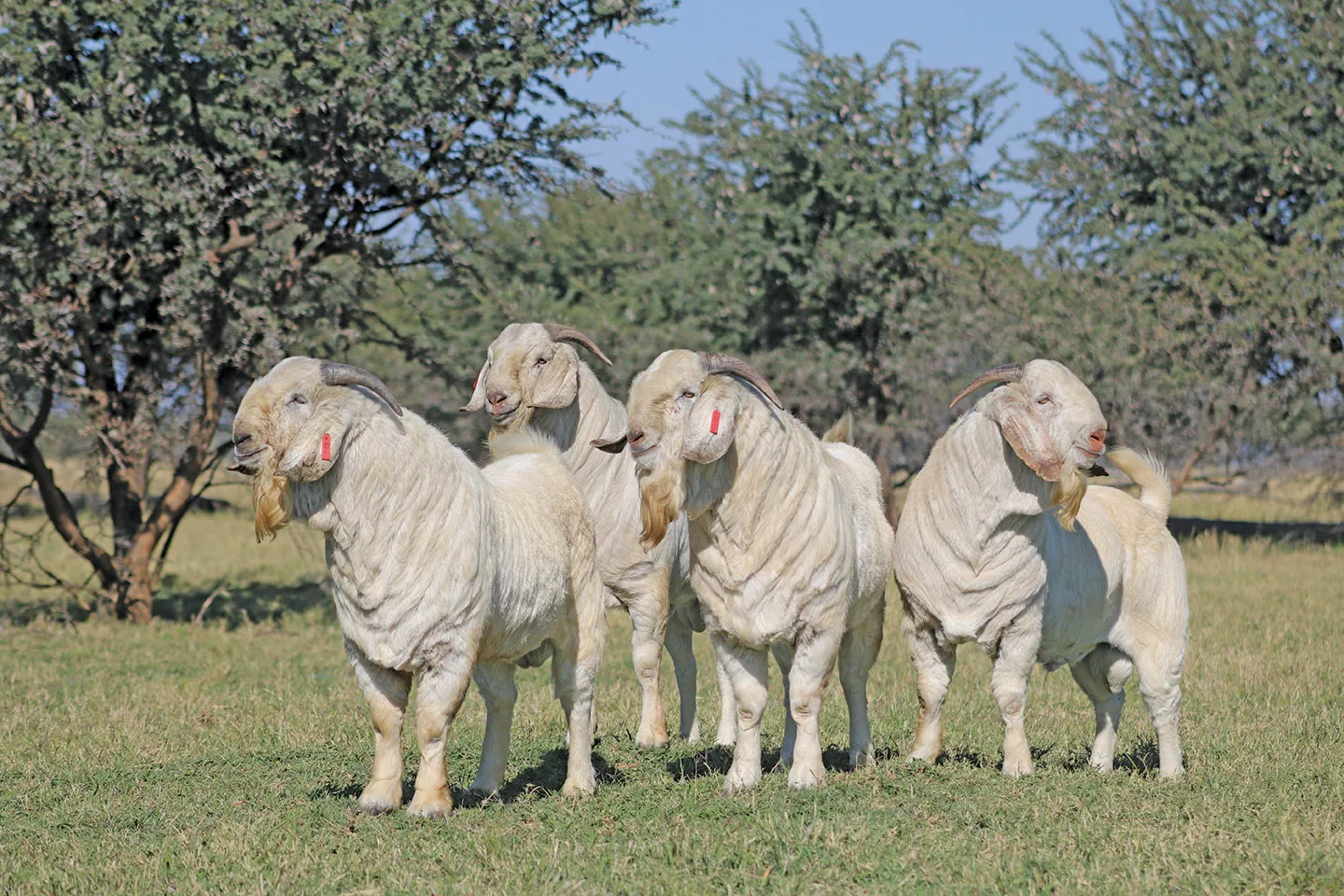
“In our quest to provide outstanding quality, for instance, we paid SA record prices for a ram and ewe for our breeding programme in 2022. We will always strive to produce functional and highly economical animals.”
The Maize Valley stud consists of 10 breeding rams, 125 ewes, 40 young ewes and 30 young rams. The animals are kept on the Roberts land near Hoopstad and in Vryburg. The Hoopstad land consists mostly of grass veld while Vryburg grazing includes grasses, herbaceous shrubs and trees.
Savanna goats are naturally adapted to a wide variety of grazing conditions, and are excellent grazers and browsers. The Maize Valley flock are provided with a phosphate lick in the summer and a maintenance lick in winter. The show animals are provided with special rations before a show event.
The animals are kept in a four-camp system with a central watering point. Extended periods of drought are not uncommon in the Free State and North West and for that reason some camps are rested on a regular basis to carry the flock over in difficult production conditions.
Reproduction, according to Pretorius, forms the cornerstone of any livestock breeding enterprise, which is why it is crucial to select the top breeding animals.
Multiple births are the norm. The ewes have a strong maternal instinct and excellent milk production.
The couple maintains three breeding seasons annually, from December to January, March to April, and August to September. The three mating seasons makes for easier management and spreads labour requirements. The kids are weaned at 90 days.
Birthweights
Birthweights vary, depending on the number of kids born to an ewe. In the case of a single kid, the birthing weight can be as high as 6kg. In case of multiple siblings, the weight can drop to between 2,5kg and 5kg.
The female kids weigh an average of 20kg upon weaning and the male kids weigh about 25kg on average. The stud maintains an average kidding percentage of 280%, with an average weaning percentage of 250% under favourable conditions.
The flock is dewormed regularly and inoculated with Multivax P+ twice a year. “Deworming programmes are very important,” says Pretorius.
“If a flock is kept clean of parasites, such as hairworm, producers have already overcome the challenges in terms of animal health by 80%.”
Email Ju-mari Pretorius at [email protected] or Andrew Roberts at [email protected].

